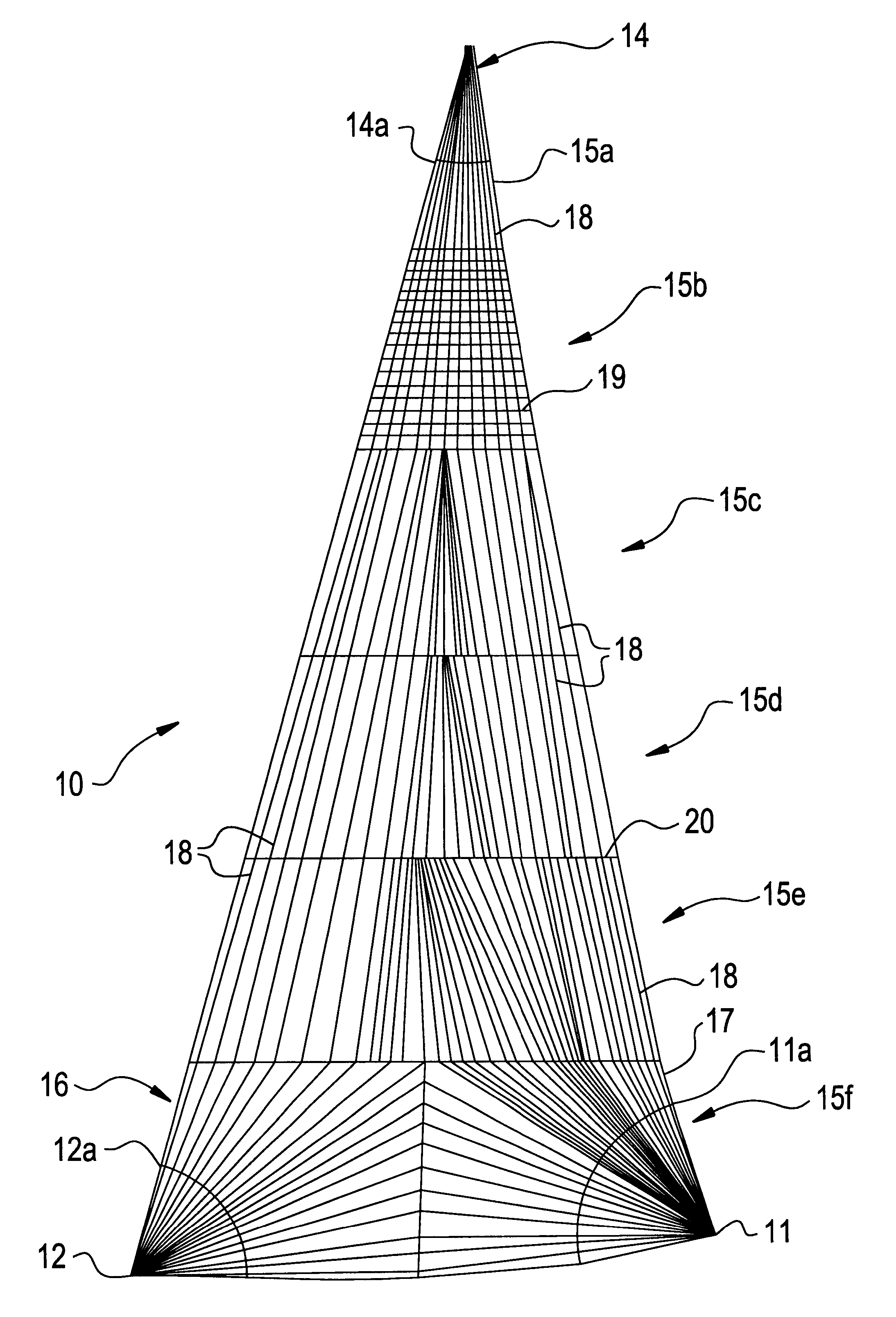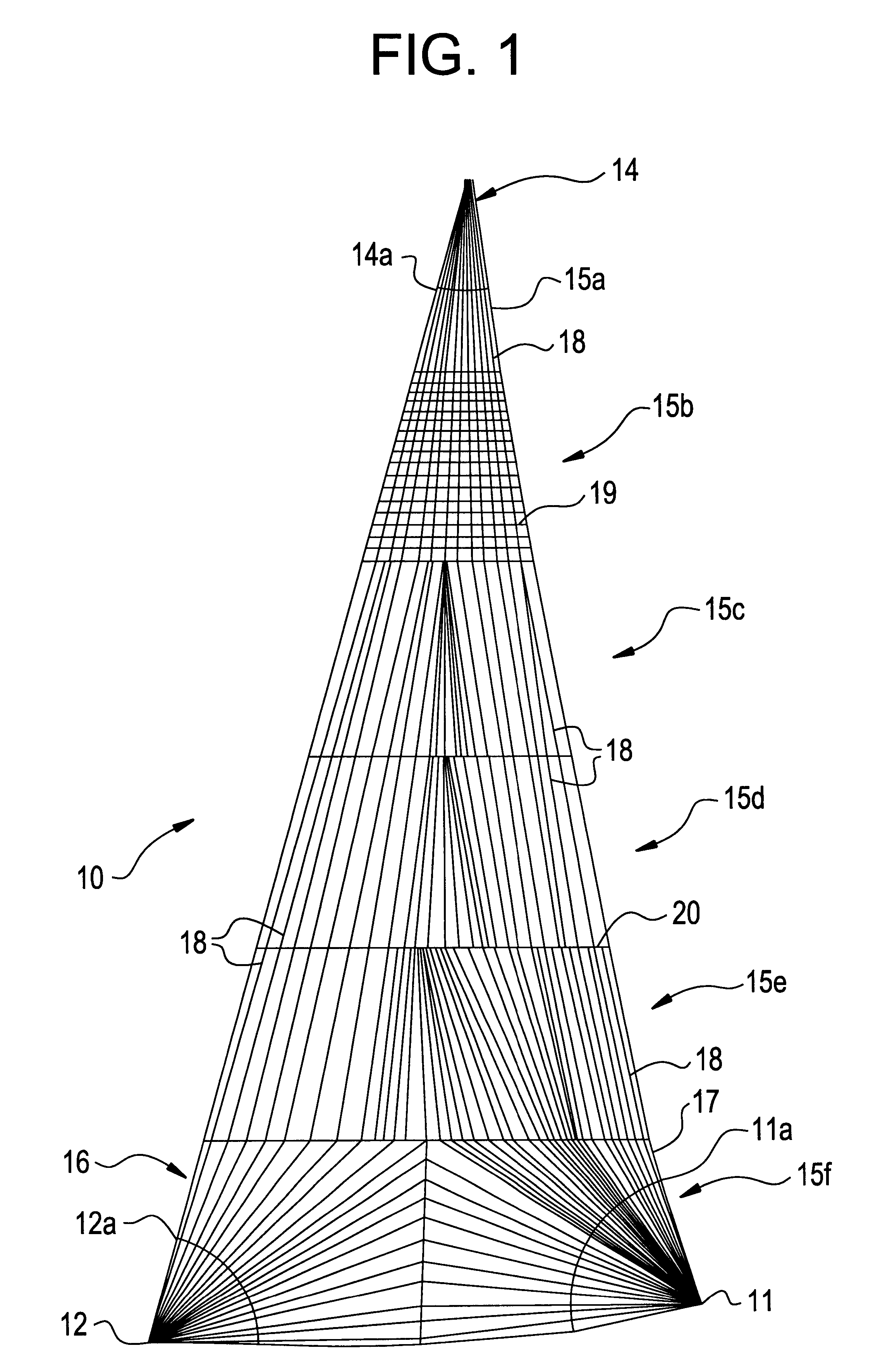Sail of woven material and method of manufacture
- Summary
- Abstract
- Description
- Claims
- Application Information
AI Technical Summary
Benefits of technology
Problems solved by technology
Method used
Image
Examples
Embodiment Construction
With reference to the drawings schematically illustrating various embodiments of the invention and without limiting other aspects of the invention;
FIG. 1 illustrates, in a plan view, a sail according to the invention herein;
FIG. 2 illustrates, in a plan view for the sail of FIG. 1, a pair of woven panels according to the invention herein;
FIG. 2a illustrates schematically, for a circular break-out section of FIG. 2 therein, a warp and fill yarn orientation in a panel;
FIG. 3 illustrates schematically, in a cross-sectional view, a weaving loom for the sail material according to the invention herein including attendant yarn-feed means, a resin application section, and a laminating section for carrying out various aspects of the herein described invention as shown in FIGS. 1 to 2a;
FIG. 3a, illustrates in a top view, a yarn gathering device used in FIG. 3 loom for making corner panels for the sail shown in FIG. 1;
FIG. 4 illustrates, in a perspective view, a laterally adjustable heddle seg...
PUM
 Login to View More
Login to View More Abstract
Description
Claims
Application Information
 Login to View More
Login to View More - R&D
- Intellectual Property
- Life Sciences
- Materials
- Tech Scout
- Unparalleled Data Quality
- Higher Quality Content
- 60% Fewer Hallucinations
Browse by: Latest US Patents, China's latest patents, Technical Efficacy Thesaurus, Application Domain, Technology Topic, Popular Technical Reports.
© 2025 PatSnap. All rights reserved.Legal|Privacy policy|Modern Slavery Act Transparency Statement|Sitemap|About US| Contact US: help@patsnap.com



